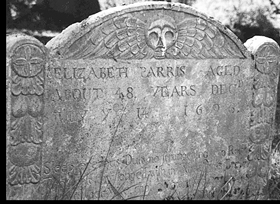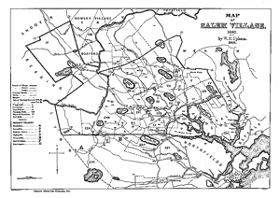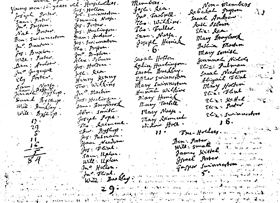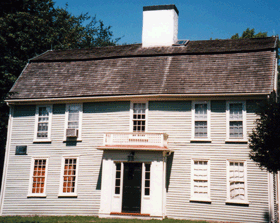Credits
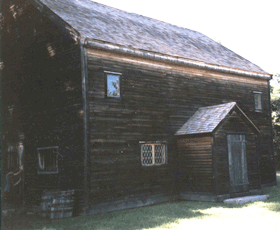
A reconstruction of Salem Village's meeting house, located at the Rebecca Nurse Homestead, Danvers, MA. The village held church services in the meeting house. Photo by the author.
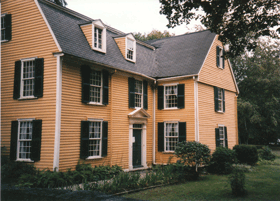
John Hale was minister at Beverly, which neighbored Salem Village. A graduate of Harvard, Hale lent support to the witch hunt but grew increasingly mistrustful as the outbreak continued, sweeping people of quality and reputation into its ambit. The specter of his own wife appeared to one of the afflicted! In 1702, Hale published his account of the Salem event, claiming, in effect, that those in charge had followed outmoded precedents in relying upon spectral evidence. His narrative remains a valued source about Salem. Photo by the author.
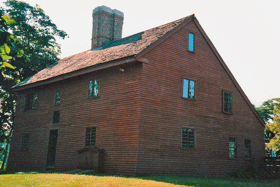
Homestead of Francis and Rebecca Nurse in Danvers, MA. Francis Nurse was associated with the anti-Parris faction and was elected to the village's Committee of Five in 1691. Rebecca was a member of the Salem Town church. She was accused of witchcraft in March 1692, tried, and hanged in July. Photo by the author.
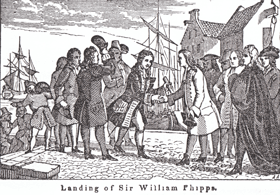
William Phips, a native of New England, was the first royal governor of Massachusetts. He arrived in Boston in May 1692 and authorized the Court of Oyer and Terminer to try accused witches. Although Phips dismissed the Court in October, helping to end the outbreak, many historians believe he had been supportive of the witch hunt. Library of Congress, LC-USZ62-98465.
Elizabeth (Eldridge) Parris was a member of Boston's First Church when she married Samuel Parris some time in late 1680 or early 1681. In Salem Village, they lived in the ministry house with their three children, two slaves (Tituba and John Indian), and Samuel's niece, Abigail Williams. One of their children, Betty, along with Abigail, experienced the afflictions that were eventually diagnosed as witchcraft. Elizabeth died in the summer of 1696, shortly after Parris stepped down from the ministry. He wrote a poignant epitaph of affection. Her headstone is in Wadsworth Cemetery, Danvers, MA. Photo by the author.
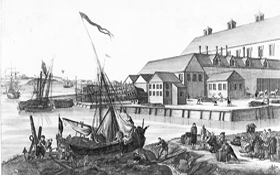
In contrast to its agricultural hinterland, Salem Village, Salem Town was a bustling commercial center in the late seventeenth century. Distance and conflicting interests led Salem Village to establish its own church in 1672, and some villagers wished more independence from the town. Nevertheless, the village remained a part of Salem Town until 1752. Library of Congress, LC-USZ62-41172.
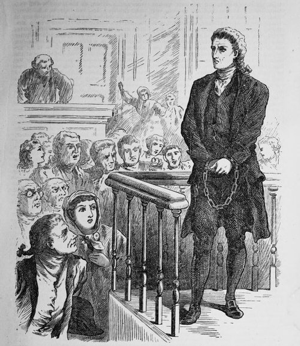
A graduate of Harvard, George Burroughs was Salem Village's second minister, serving for a brief period in the early 1680s. His ministry was an unhappy one, and he gained a reputation for harsh treatment of his first two wives and for unorthodox religious ideas identified with Baptists. After he stopped preaching in the village, he made his way to the Maine frontier, then a part of Massachusetts. At the end of April 1692, he was formally complained against for witchcraft. Returned to Salem to face trial, he was convicted and hanged. The arrest of a minister confirmed for witch hunters that their community was under full attack from the Devil. Image from Frank Leslie's Illustrated Newspaper 31 (1871), p. 345, Library of Congress, LC-USZ62-122180.
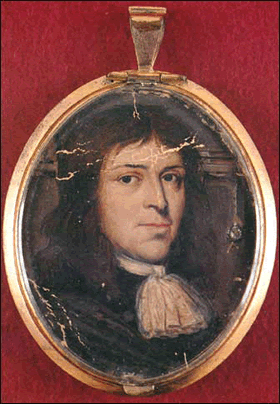
Samuel Parris became Salem Village's first ordained minister in 1689. Born into a religious family in London (his brother was a minister), he first pursued a career in commerce and farming before turning to the ministry. Parris's tenure in Salem Village was as controversial as his three predecessors, and by 1691, opposition to his ministry sought to limit his rights to the ministry house and lands, and also to make his pay voluntary. It was in his home that the Salem outbreak first began. It is likely though not certain that this miniature portrait is of Samual Parris. Image from Wikimedia Commons <http://en.wikipedia.org/wiki/File:Samuel_Parris.jpeg>.
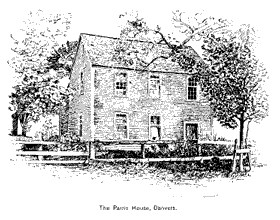
A nineteenth century sketch of the Salem Village ministry house. It was a source of contention between Parris and his opponents. Parris claimed ownership of the house and land, but the dissenters contended that both house and land remained the possession of the village. Image in Winfield S. Nevins, "Stories of Salem Witchcraft," The New England Magazine, 11 (1891): 523, at "Making of America" <http://dlxs2.library.cornell.edu/m/moa/>.
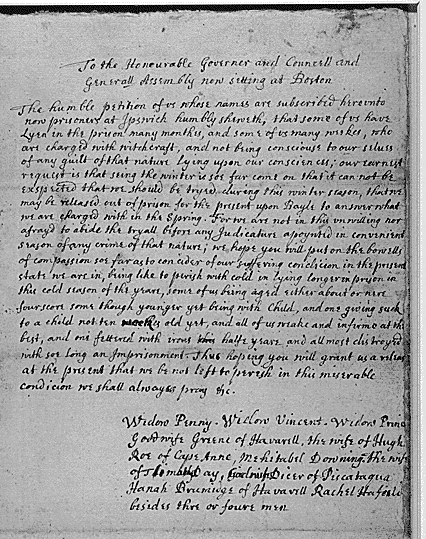
While confessions by accused witches propelled the witch hunt forward, petitions signed by the accused, their family, neighbors, and occasionally ministers attesting to their innocence contributed to growing skepticism about the afflicted accusers and the legal process. By October 1692, petitions directed to civil authorities requesting release from jail became more frequent, and civil authorities released some of the accused from jail on recognizance. This petition for release from jail by ten prisoners in the Ipswich jail was written some time between October and December 1692. A transcription appears in Rosenthal, ed., Records of the Salem Witch-Hunt, pp. 697-98. John Davis Batchelder Autograph Collection, Library of Congress, LC-MSS-12021-1.
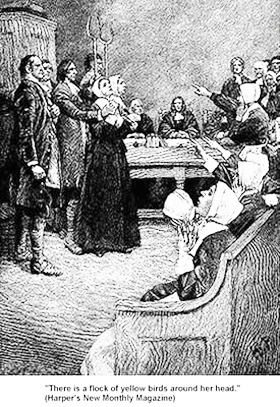
This nineteenth-century drawing calls attention to the reliance by magistrates and judges on spectral evidence, whereby afflicted accusers pointed to specters or familiars, like birds, associated with the accused. Although many considered such evidence suspect, officials thought it unlikely that the Devil would incriminate an innocent person. As the numbers of accused and convicted soared, doubts about spectral evidence and the testimony of the afflicted also grew. By October, many believed that the Devil had deluded them. Image from Mary E. Wilkins, "Giles Corey, Yeoman: A Play," Harper's New Monthly Magazine 86 (1892): 31, at "Making of America" <http://dlxs2.library.cornell.edu/m/moa/>.
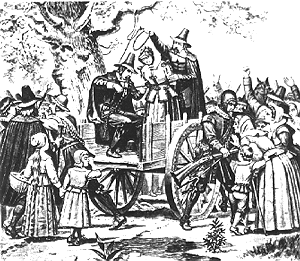
Bridget Bishop was married to the "sawyer" Edward Bishop of Salem Town. She had once before been accused of witchcraft and had been involved in a number of disputes with neighbors. Hers was the first trial by the Court of Oyer and Terminer in June 1692, and she became the first accused person to be hanged. The court's reliance on spectral evidence stirred controversy. Misgivings about the court would later swell. Image at "Famous American Trials: Salem Witchcraft Trials 1692" <http://law2.umkc.edu/faculty/projects/ftrials/salem/SAL_IHAN.HTM>.
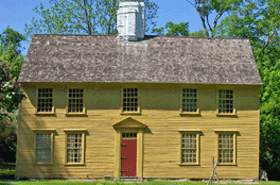
Rev. Thomas Bernard was the younger of Andover's two ministers. Like Salem Village, Andover had religious tensions, which were linked to its two ministers. Bernard initially encouraged Andover's witch hunt, unlike his older colleague, Francis Dane, but by mid-October 1692, Bernard joined Dane in petitioning on behalf of Andover's jailed residents and quieting the disorder. Photo by the author.
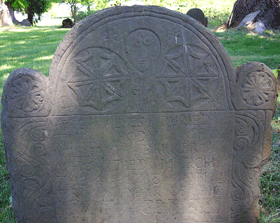
Andover had more accused witches than any other community. William Barker, Jr., was fourteen years old when he confessed to witchcraft in September 1692. His father had been accused (and confessed) the previous August. Like many Andover confessors, both Barkers provided detailed and elaborate stories of witch gatherings involving baptism and other rituals. Barker, Sr., alleged that Satan's desire was to abolish all the churches, starting with Salem Village. Photo by the author.
A map of Salem Village showing residence sites and land boundaries as well as the location of the meeting house, ministry house, and select sites in Salem Town was published in 1867 by Charles W. Upham in Salem Witchcraft. Information about the map and different map views can be accessed at the "Salem Witch Trials" website <http://salem.lib.virginia.edu/maps/index.html>. This image is from Wikimedia Commons <http://commons.wikimedia.org/wiki/File:Map_of_Salem_Village.jpg>.
Both the pro- and anti-Parris petitions of 1695 appear in the "Records of the Salem Village Church" in Samuel Parris's handwriting. The documents are accurately transcribed in Boyer and Nissenbaum, eds., Salem-Village Witchcraft. The images were made from a photocopy of the original at the Danvers Archival Center of the Peabody Institute Library at Danvers, MA. They are used with permission of the First Church of Danvers.
Joseph Putnam was the younger half-brother of Thomas Putnam, Jr., a prominent Salem Village church member whose wife and daughter were among the first afflicted accusers. Joseph, one of the village's wealthiest residents, was not a church member, opposed the Parris ministry, and held a seat on the anti-Parris committees of 1691 and 1692. Photo of the Joseph Putnam house in Danvers, MA, by the author.
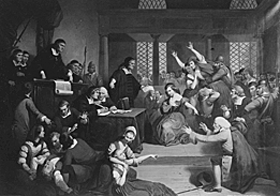
The aged George Jacobs, Sr., of Salem Town, his son, and grand-daughter were all accused of witchcraft. Accusers often targeted relatives since witchcraft was considered to run in a family. His grand-daughter confessed and accused him but later recanted. Arrested in May, Jacobs was tried and hanged in August 1692. Painting in the collection of the Peabody Essex Museum. Library of Congress LC-USZ62-94432.
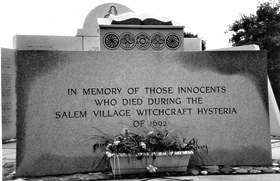
This memorial to the victims of the Salem witch hunt was dedicated in spring 1992, three hundred years after the event. It is located across the street from the site of Salem Village's original meeting house, and its highly symbolic design memorializes those who died, either in jail or by execution. Photo by the author.
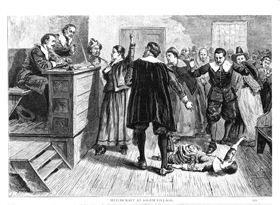
This nineteenth-century depiction of an examination in Salem Village emphasizes the disorder that accompanied the behavior of the afflicted accusers. Magistrates considered the pain and trauma allegedly experienced by the afflected as compelling evidence of damaging power of the accused witch. Library of Congress LC-USZ62-24187.
